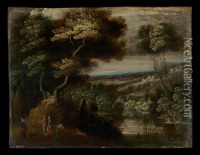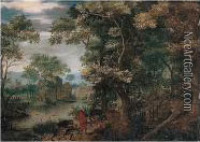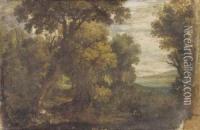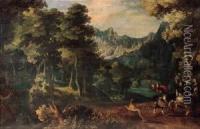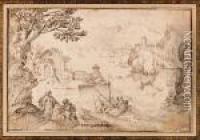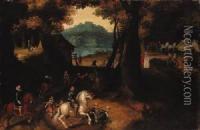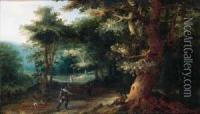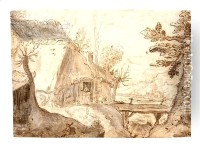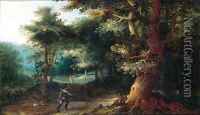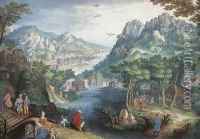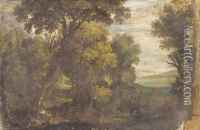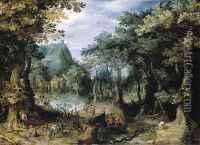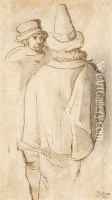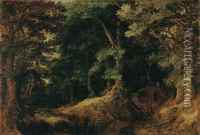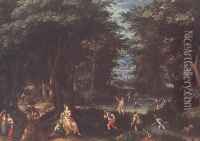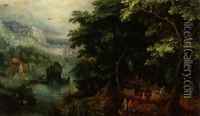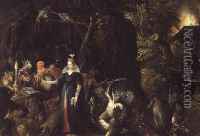Gillis van Coninxloo Paintings
Gillis van Coninxloo was a prominent Flemish painter of landscapes who played a significant role in the development of Northern European landscape painting during the late 16th and early 17th centuries. Born in Antwerp in 1544, he belonged to a family of painters and was trained by his father. Van Coninxloo initially started his career in Antwerp, where he became a master in the local painters' guild in 1565. His early works were influenced by the Mannerist style, which was prevalent in the region during that time.
Due to the religious turmoil and the outbreak of the Eighty Years' War, Coninxloo, like many artists of his time, left Antwerp. He moved to Liège and later to Aachen, and finally settled in Frankfurt in 1585. His travels and exposure to different artistic environments played a crucial role in the evolution of his painting style.
In 1595, Coninxloo moved to Amsterdam, where he spent the rest of his life. It was here that he developed his mature style, which was characterized by a more naturalistic approach to landscape painting. He abandoned the artificial Mannerist landscapes of his earlier period and began to focus on depicting more realistic forest scenes and woodland landscapes. His works from this period show a remarkable attention to detail and a deep appreciation for the natural world, which influenced many of his contemporaries and successors.
Coninxloo's landscapes are notable for their use of color and light, as well as the inclusion of small human figures that give scale to the vastness of nature. He often depicted the forests of Germany and his native Flanders, creating a sense of depth through the layering of trees and foliage. His paintings also reflect the transition from the world of medieval and Renaissance landscapes to a more modern understanding of the landscape genre.
Gillis van Coninxloo died in Amsterdam in 1607. His legacy includes not only his contributions to landscape painting but also his influence on the next generation of artists. His pupils and followers, such as Jacob van Ruisdael and other members of the Dutch Golden Age of painting, continued to develop the landscape genre, establishing it as a significant and independent area of Northern European art.

